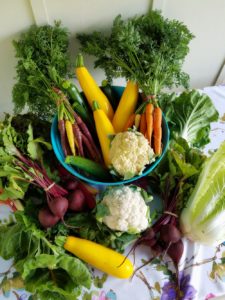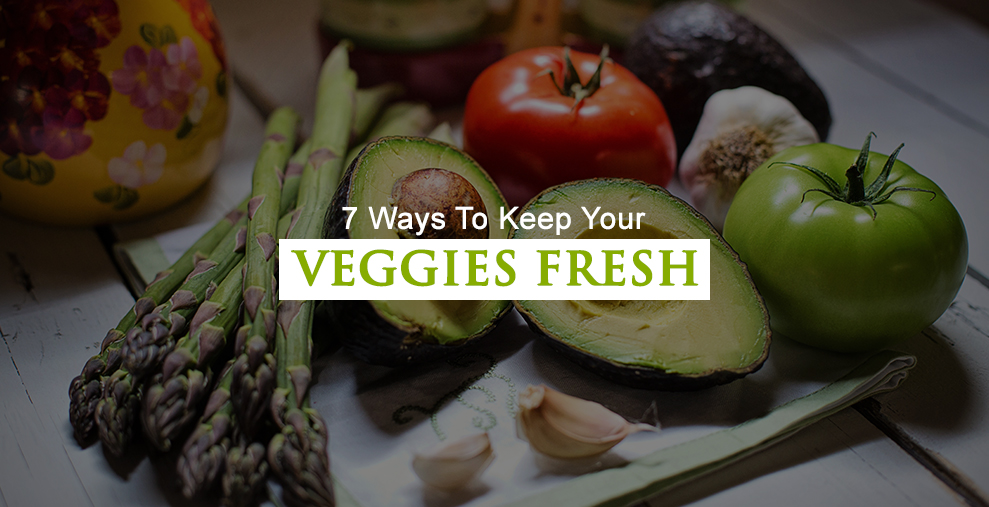Going to the grocery store and picking up some fresh, ripe veggies is an exciting part. The only problem with buying fresh, organic produce is that it can quickly start to wilt and loose nutrients and freshness.
However, we’ve got some tips and tricks to help you enjoy your fresh produce for as long as possible. Check out these seven tips to keep your veggies fresh longer:

Vegetables
1. Prepare produce for storage and store it as soon as you get home
Don’t leave your produce in a hot car while you run around completing more errands. Keep them in fridge as soon as you can.
2. Remove excess moisture
If vegetables are wet from constant grocery case spraying or from a big rain the night before the farmers market, make sure to pat produce dry before storing it. You can also wrap produce in a lint-free kitchen towel or line the storage bag with a paper towel to absorb any remaining moisture
3. Don’t just place items in the fridge
Produce needs some protection from the cold conditions in the refrigerator. Place items in a plastic produce bag or zip-top bags, or wrap produce in a lint-free kitchen towel. You can place produce directly in the produce drawer, but still it is best to place it in a bag first.
4. Store items that you will leave out of the refrigerator, like potatoes, onions, garlic, and fruits in a cool, dry place
Don’t place them next to the oven, the stove, on top of the refrigerator, or by a window sill. Place them on a counter where they won’t receive direct sun (shade is ideal). A cool basement is an even better storage option.
5. Think about placement in the fridge
Don’t place produce in the back of the refrigerator, where it can be too cold and sometimes icy.
6. Keep tomatoes OUT of the refrigerator
Tomatoes are a staple for most of us year round, but keeping them from rotting in the summer can be difficult. Putting tomatoes in the fridge may seem like a sure-fire way to keep them fresher, longer, but think again. One of the most common food storage mistakes is keeping tomatoes in the refrigerator, when in fact keeping them in cold temperatures rids them of their flavor and transforms their texture in just a couple of days. Instead, put them in a bowl that you have lined with a paper towel with the stems at the top. The most tender part of the fruit is directly around the stem, making this part most likely to bruise, which leads to rotting. Temperature is another important factor when storing tomatoes and room temperature is preferable — keep them away from heat sources and direct sunlight. And if you’re still not consuming them as quickly as you hope, do move them around in the bowl to avoid bruising. For the less attentive, you can also purchase a special container with controlled ventilation and ridges to keep moisture away. Your tomatoes should keep for at least a week.
7. Keep leafy greens dry
For leafy greens to last longer, they should be kept cool and dry in the refrigerator. Make sure your leafy greens are dry (use a salad spinner or paper towel). Next, wrap them loosely and gently in a paper towel. Line a resealable plastic bag with more paper towels, and place the leafy greens in. Push any excess air out and seal the plastic bag. The leafy greens should be able to last as long as a week. You can regularly check the plastic bag, if the paper towels have gotten damp, replace it. Remember to store vegetables and fruits separately in the refrigerator. Try not to cut or tear leaves, or remove from stem before storage.
